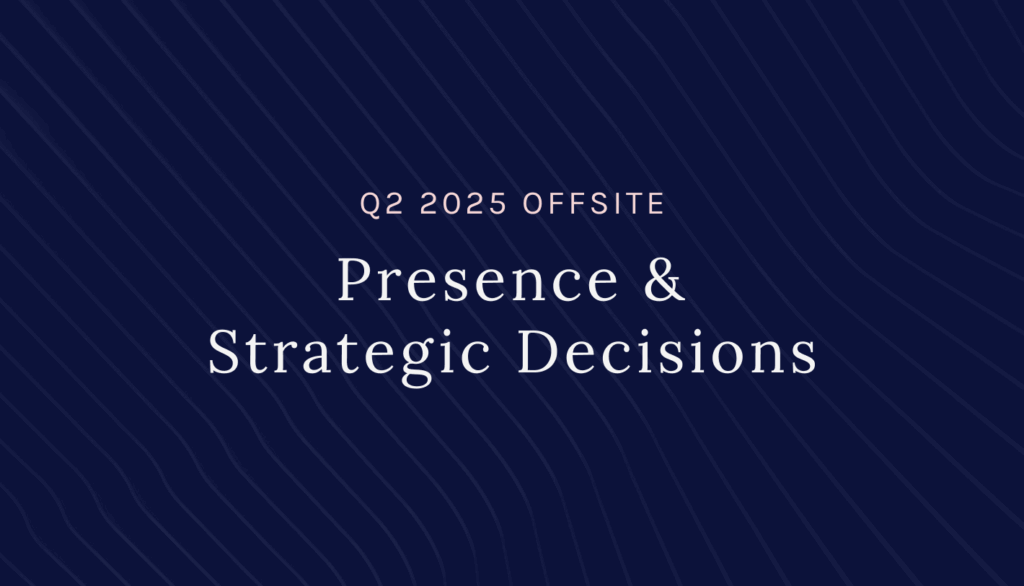There’s a certain feeling when a team is fully locked in.
It’s hard to describe without sounding too far out there, but if you’ve experienced it, you know what I mean. It doesn’t happen often, but when it does, it leaves a kind of imprint. Not just a memory — more like a snapshot that includes the feeling in the room, the body language, the tone of voice, the light, even the way the air felt.
Our recent Q2 offsite was full of those moments.
We designed the offsite with presence as a central intention. We wanted to step away from the distractions and pace of day-to-day operations and get quiet enough to hear what mattered. This wasn’t about productivity. It was about depth.
The Agenda
Here’s what the day looked like:
- Values, Vision, Mission Presentation – updated versions, now more specific and behavior-driven.
- Read Each Other’s Insecurities and Goals – submitted in advance, read silently.
- Problem-Solving Vignettes – designed to surface live challenges and team dynamics.
- Lunch
- Finance & Forecasting Presentation – led by our CFO.
- Discussion of Role Evolutions – not yet public, but outlined internally.
- Performance vs. Strategic Focus – explored the difference between onsite execution and corporate support.
We didn’t try to cover everything. The goal wasn’t breadth. It was to surface a few strategic insights and deepen alignment — a few clear, durable decisions that would carry forward.
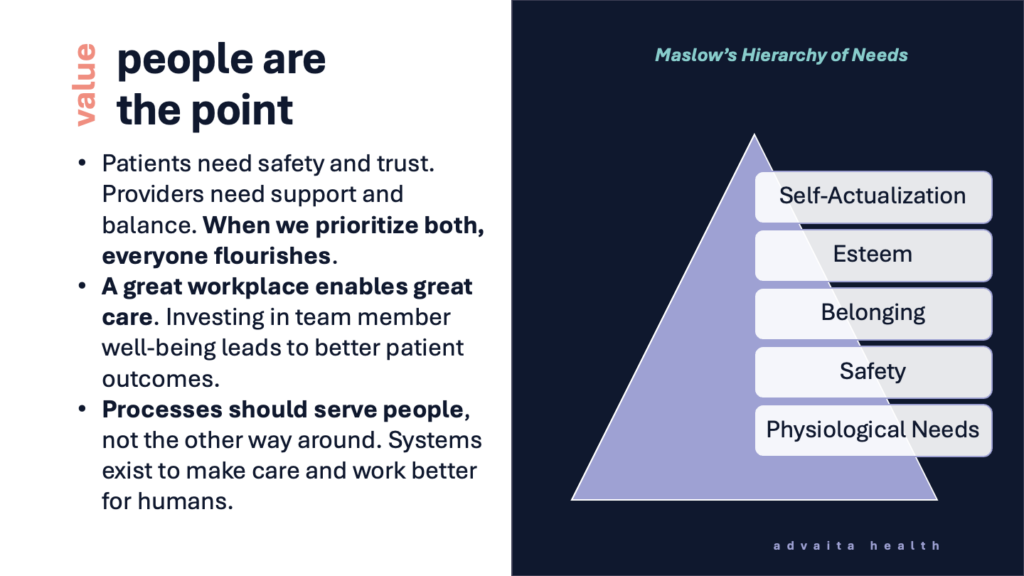
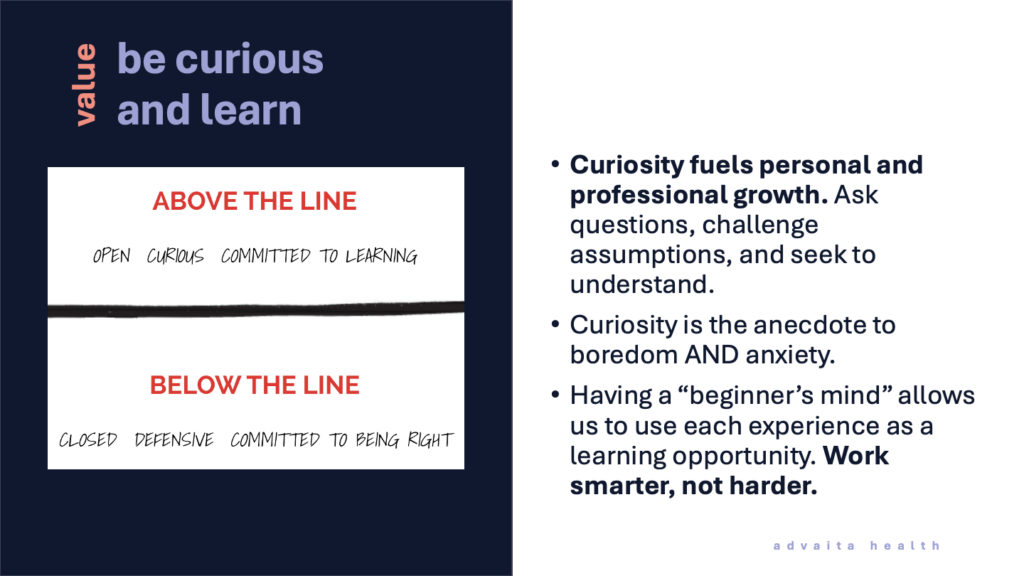
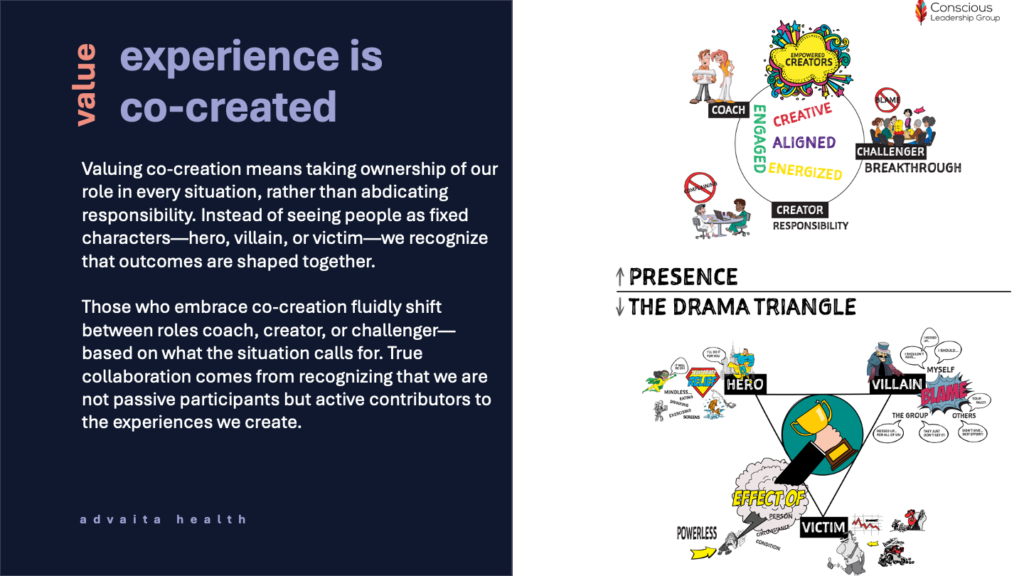

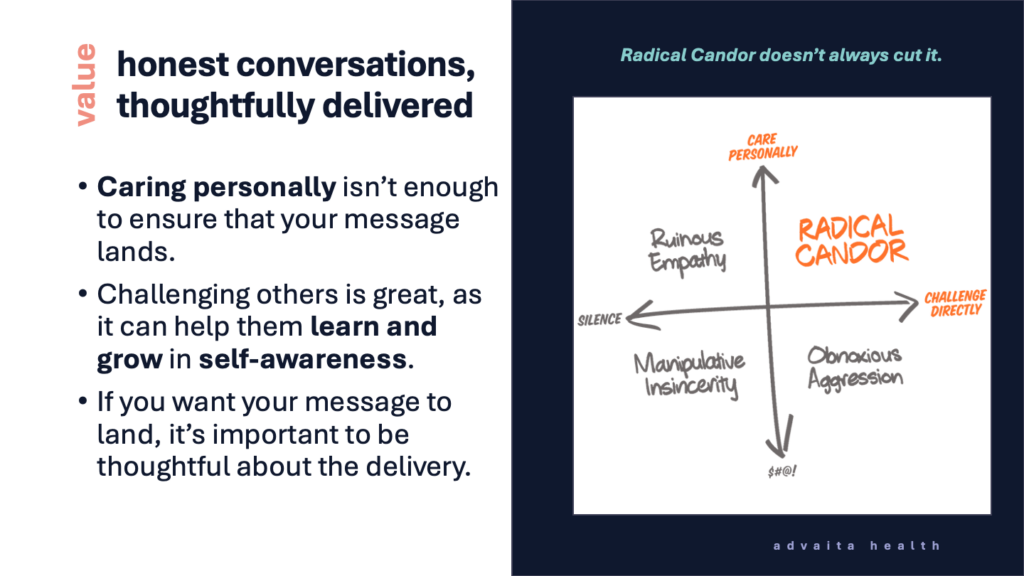
Creating Conditions for Presence
We set some structure to support the experience. No phones. No laptops. Everyone completed a short reflective exercise ahead of time, where they shared their personal goals and insecurities. We didn’t discuss these out loud, but we read them together in silence. That alone changed the tone. There’s something about holding someone’s vulnerability with no expectation of response — it shifts how you see each other.
We also slowed the cadence of the day. We built in time between sessions and avoided the temptation to over-structure. It can be uncomfortable to leave space in a group setting — especially for leaders — but space is often where the real stuff emerges.
We’ve also spent the last few months refining our values. They’re no longer abstract statements that sit on a slide deck. They’ve evolved into something clearer and more observable — a shared language that describes how we want to work together. This work showed up throughout the offsite. We didn’t have to refer to the values explicitly — they were in the room.
When Things Got Messy
Even with all that structure and intention, I made a mistake.
During one of the vignette discussions, I made an offhand comment to Nick: “You’re trying too hard. Chill.”
The moment the words left my mouth, I knew they landed poorly. It was flippant and dismissive. I didn’t mean it to be, but intent only goes so far. You could feel the shift in the room. The momentum we had built through the morning dissipated. It wasn’t dramatic, but it was noticeable. Something got knocked loose.
We continued the discussion, but the shift was palpable. Over our lunch break, I apologized to Nick, my most-trusted colleague and friend, and we decided to model a clearing conversation using the Conscious Leadership Group framework. Nick gave me the benefit of the doubt. I owned the impact of my words and made a commitment to be more thoughtful. It was uncomfortable, but necessary.
This moment wasn’t what I wanted. I had hoped to lead by example throughout the day — to set the tone, not disrupt it. But I also know that leadership isn’t about perfection. Sometimes leading by example means repairing in real time, not pretending things didn’t happen. And I’m proud of how we handled it.
What Emerged After
Later in the day, someone shared how deeply meaningful it is to work here — and they became emotional while doing so. That wasn’t planned or prompted. It just happened, and rather than shift the energy with humor or move quickly to the next slide, we sat with it. We gave it room. That kind of presence — sitting with someone else’s truth without trying to fix it — is the culture we’re trying to build.
For me, that moment became the imprint. The thing I’ll remember most clearly. Not a strategy session or financial decision, but the feeling that we’re creating something that actually matters to people. Something that’s alive.
Presence Isn’t Accidental
I don’t think presence “just happens.” It can, but usually it doesn’t. It has to be designed for. That design includes structural decisions — no devices, space to think — and cultural ones, like shared language, trust, and tools that help when things go off course.
We’ve been fortunate to work with frameworks that support this kind of work — from Lencioni’s Five Dysfunctions to the Conscious Leadership Group’s models. But tools alone aren’t enough. It also takes a group of people willing to show up honestly and sit in the messiness long enough to find clarity on the other side.
We’re still learning. There’s a lot we’re figuring out as we grow. But this offsite gave me confidence that we’re headed in the right direction — not because everything went perfectly, but because of how we responded when it didn’t.
Looking Ahead
This offsite reminded me that creating a deeply aligned, healthy organization doesn’t come from volume or speed. It comes from moments — quiet, real moments — where people feel seen, heard, and understood. The work is the people. And presence is the starting point.
Next, I’ll share a few thoughts on how we’re thinking about the role of “corporate” — and why it’s not a dirty word.
